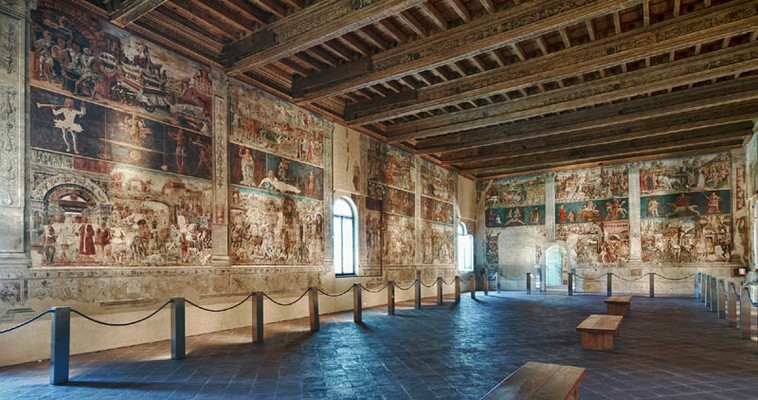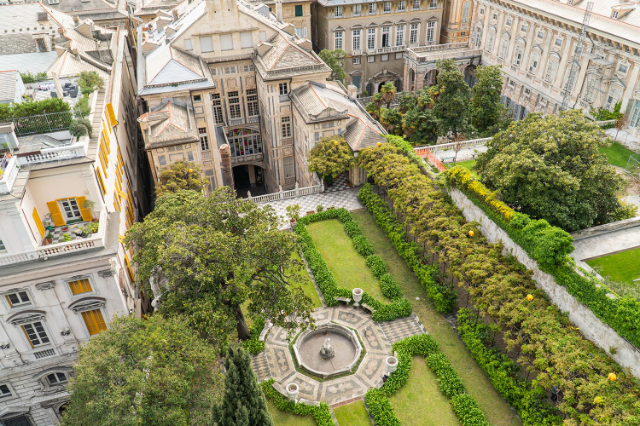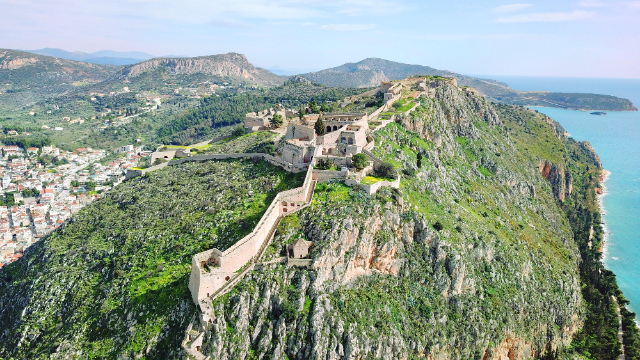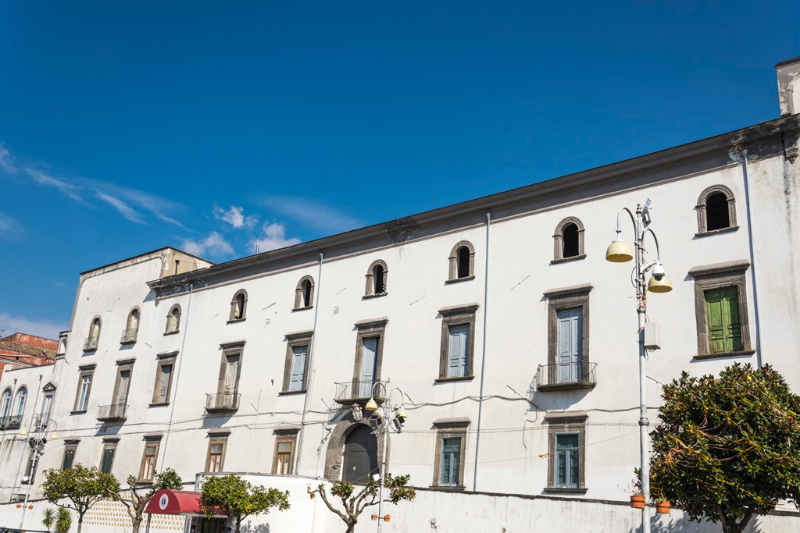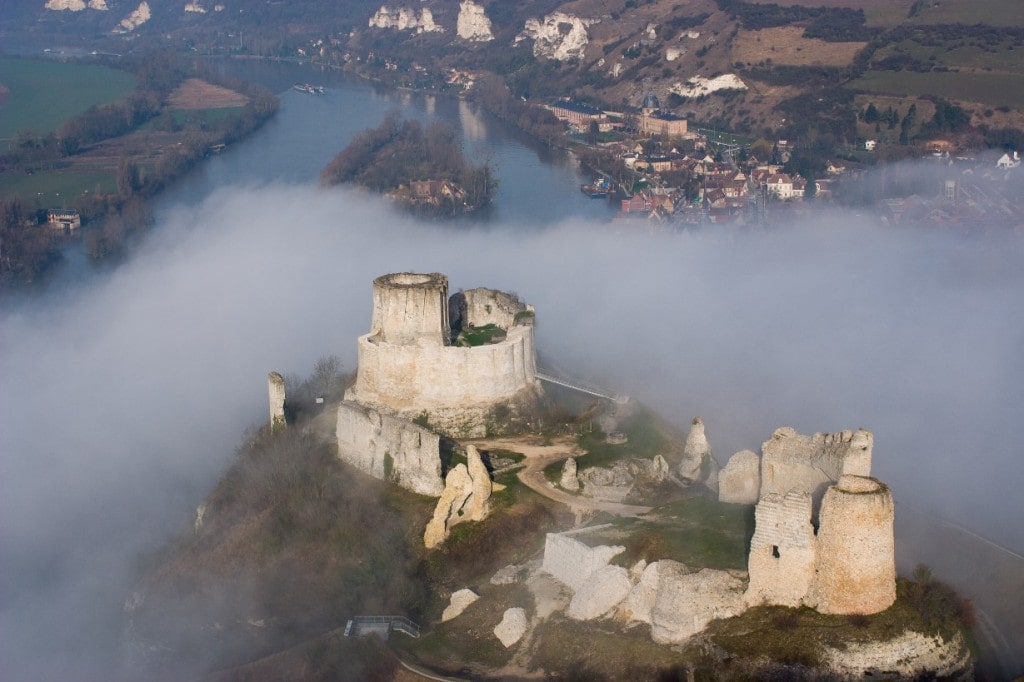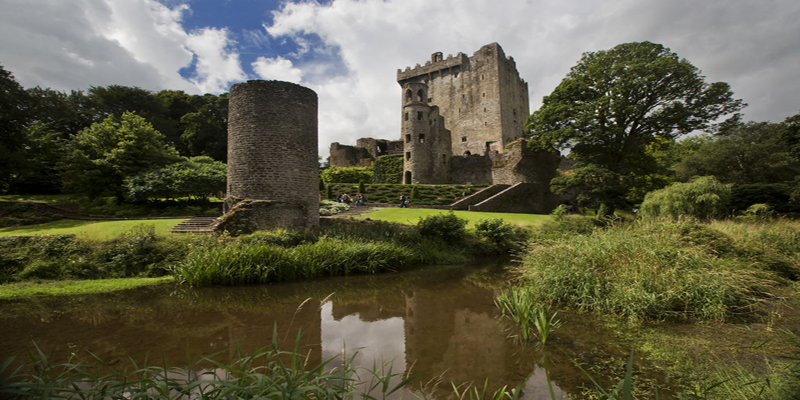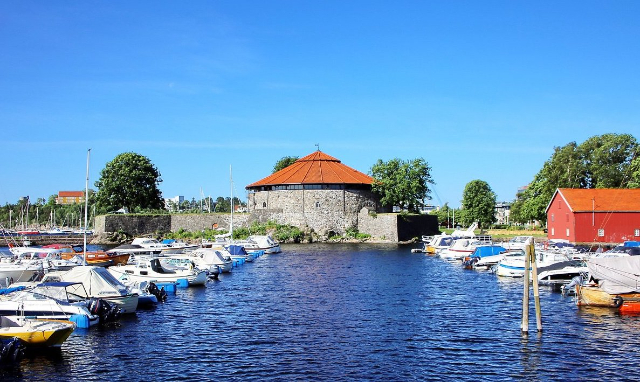If the origin of Schifanoia dates back to the end of the fourteenth century, when Alberto d’Este promoted its construction outside the urban fabric of the city, there is no doubt that the image of the Palace is inextricably linked to the figure of Borso d’Este, lord of the city between 1450 and 1471, and the so-called Salone dei Mesi.
In fact, Borso, who had been involved since 1467 in the expansion of the family Delizia, decided to decorate even the largest room, the fulcrum of the entire building. To this end, in 1469 he summoned a large group of painters to decorate the Salone in anticipation of his nomination as Duke of the city.
The author of the iconographic programme – a sort of great calendar in which Borso’s celebratory needs, ancient mythology and Arab astrology are mixed together – is Pellegrino Prisciani, astrologer and court librarian. As far as the artistic creator is concerned, this has long been identified in Cosmè Tura. It is, in reality, a news dismissed of any foundation and the few certainties regarding the autography of the decorations refer to the east wall, where Francesco del Cossa was active, as evidenced by a letter that he himself addressed to Borso in March 1470. In the surviving decorations on the northern wall, critics have instead recognized, among others, an anonymous painter known by the nickname of "Master with wide open eyes", Ercole de’ Roberti and Gherardo by Andrea Fiorini from Vicenza.
The large salon is almost 25 metres long and about 11 metres wide, the height reaches 7 and a half metres. The painted surface area therefore reached 525 square metres, a figure that makes this room one of the largest profane decorative cycles of the Renaissance.
The walls are characterized by the presence of twelve sections that corresponded to the twelve months of the year: of this only seven survive. The months are interspersed with areas in which scenes of urban or courtly life were painted. The general sense of reading is horizontal, from right to left, while each month is vertical: at the top the Triumph of the patron deity of the month depicted, in the middle band the zodiac sign and the respective deans, finally, the last is dedicated to the splendor of the patron, portrayed three times in each scene while flaunting the ducal virtues that distinguished his kingdom.
The Salone was conceived as a sort of illusory scenic box: twenty-two painted pilasters simulate the function of supporting the wooden ceiling starting from a high balustrade decorated with cherubs. These elements were called to simulate the presence of an illusory space, a sort of old-fashioned loggia that opened onto Ferrara at the time of Borso d’Este.
